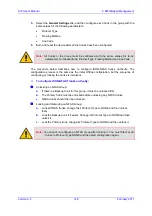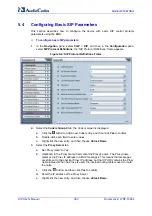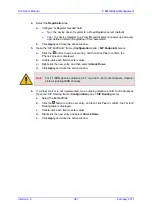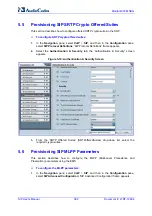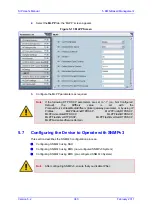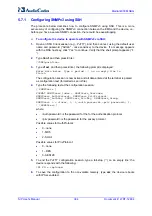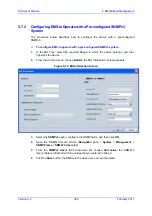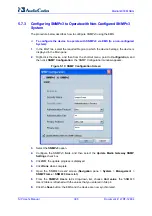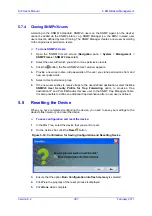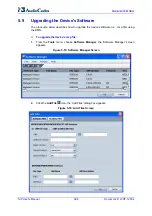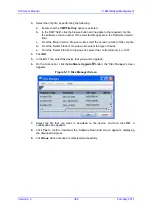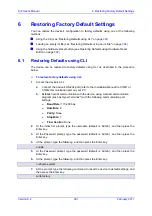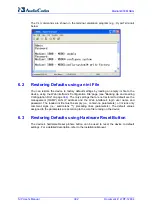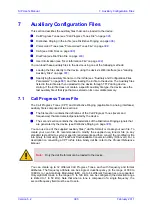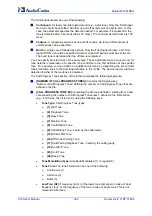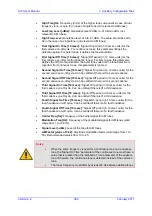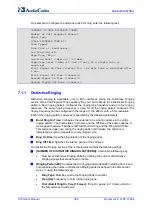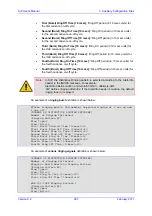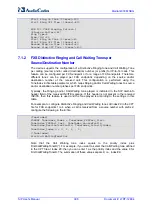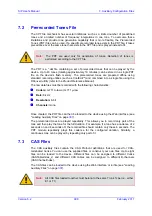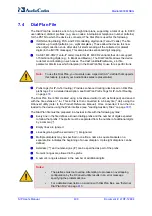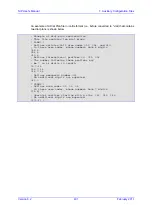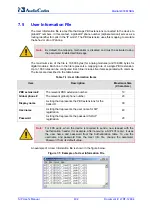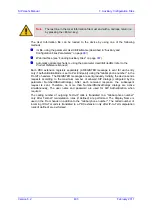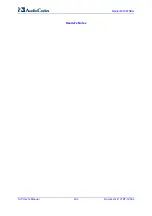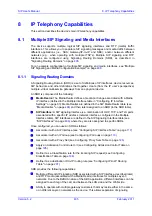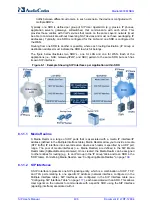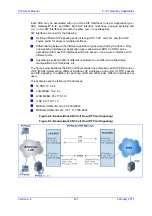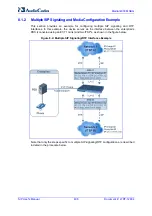
Version 6.2
393
February 2011
SIP User's Manual
7. Auxiliary Configuration Files
7 Auxiliary
Configuration
Files
This section describes the auxiliary files that can be loaded to the device:
Call Progress Tones (see ''Call Progress Tones File'' on page
Distinctive Ringing in the ini file (see Distinctive Ringing on page
Prerecorded Tones (see ''Prerecorded Tones File'' on page
CAS (see CAS Files on page
Dial Plan (see Dial Plan File on page
)
User Information (see ''User Information File'' on page
)
You can load these auxiliary files to the device using one of the following methods:
Loading the files directly to the device using the device's Web interface (see ''Loading
Auxiliary Files'' on page
Specifying the auxiliary file name in the
ini
file (see ''Auxiliary and Configuration Files
Parameters'' on page
) and then loading the
ini
file to the device. The Auxiliary files
listed in the
ini
file are then uploaded to the device through TFTP during device
startup. If the
ini
file does not contain a specific auxiliary file type, the device uses the
last auxiliary file of that type that was stored on its non-volatile memory.
7.1
Call Progress Tones File
The Call Progress Tones (CPT) and Distinctive Ringing (applicable to analog interfaces)
auxiliary file is comprised of two sections:
The first section contains the definitions of the Call Progress Tones (levels and
frequencies) that are detected/generated by the device.
The second section contains the characteristics of the Distinctive Ringing signals that
are generated by the device (see Distinctive Ringing on page
).
You can use one of the
supplied auxiliary files (*.dat file format) or create your own file. To
create your own file, it's recommended to modify the supplied
usa_tone.ini
file (in any
standard text editor) to suit your specific requirements and then convert the modified
ini
file
into binary format using the TrunkPack Downloadable Conversion Utility (DConvert). For a
description on converting a CPT
ini
file into a binary
dat
file, refer to the
Product Reference
Manual
.
Note:
Only
the
dat
file format can be loaded to the device.
You can create up to 32 different Call Progress Tones, each with frequency and format
attributes. The frequency attribute can be single or dual-frequency (in the range of 300 to
1980 Hz) or an Amplitude Modulated (AM). Up to 64 different frequencies are supported.
Only eight AM tones, in the range of 1 to 128 kHz, can be configured (the detection range
is limited to 1 to 50 kHz). Note that when a tone is composed of a single frequency, the
second frequency field must be set to zero.
Содержание Mediant 800 MSBG
Страница 2: ......
Страница 366: ...SIP User s Manual 366 Document LTRT 12804 Mediant 800 MSBG Reader s Notes ...
Страница 372: ...SIP User s Manual 372 Document LTRT 12804 Mediant 800 MSBG Reader s Notes ...
Страница 390: ...SIP User s Manual 390 Document LTRT 12804 Mediant 800 MSBG Reader s Notes ...
Страница 404: ...SIP User s Manual 404 Document LTRT 12804 Mediant 800 MSBG Reader s Notes ...
Страница 616: ...SIP User s Manual 616 Document LTRT 12804 Mediant 800 MSBG Reader s Notes ...
Страница 636: ...SIP User s Manual 636 Document LTRT 12804 Mediant 800 MSBG Reader s Notes ...
Страница 652: ...SIP User s Manual 652 Document LTRT 12804 Mediant 800 MSBG Reader s Notes ...
Страница 886: ...SIP User s Manual 886 Document LTRT 12804 Mediant 800 MSBG Reader s Notes ...
Страница 890: ...User s Manual Ver 6 2 www audiocodes com ...

